Discover 20 hidden attractions, cool sights, and unusual things to do in Grasmere (United Kingdom). Don't miss out on these must-see attractions: Grasmere Lake, Dove Cottage, and St Oswald's Church. Also, be sure to include Grisedale Tarn in your itinerary.
Below, you can find the list of the most amazing places you should visit in Grasmere (England).
Table of Contents
Grasmere Lake
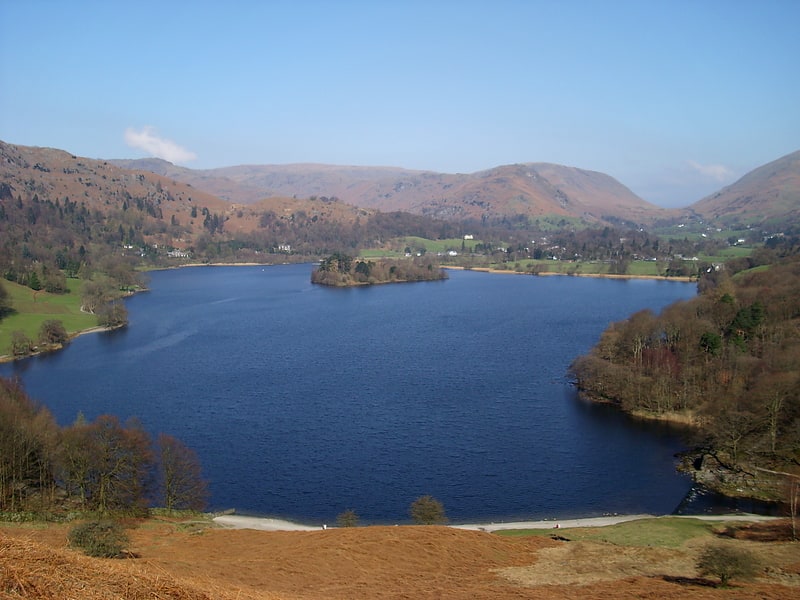
Lake in England. Grasmere is one of the smaller lakes of the English Lake District, in the county of Cumbria. It gives its name to the village of Grasmere, famously associated with the poet William Wordsworth, which lies immediately to the north of the lake.
The lake is 1680 yd (1540 m) long and 700 yd (640 m) wide, covering an area of 0.24 mi² (0.62 km²). It has a maximum depth of 70 ft (21m) and an elevation above sea level of 208 ft (62 m). The lake is both fed and drained by the River Rothay, which flows through the village before entering the lake, and then exits downstream into nearby Rydal Water, beyond which it continues into Windermere.
The waters of the lake are leased by the Lowther Estate to the National Trust. The waters are navigable, with private boats allowed and rowing boats for hire, but powered boats are prohibited.
The lake contains a single island, known as Grasmere Island or simply The Island. In 2017 this island was bequeathed to the National Trust. This gift has particular significance to the National Trust, as the organisation was founded in response to the sale of the same island to a private bidder in 1893. Canon Hardwicke Rawnsley felt that such a location should instead be in public ownership, and soon afterwards started the National Trust with Octavia Hill and Robert Hunter.[1]
Dove Cottage

Historic Wordsworth house and museum. Dove Cottage is a house on the edge of Grasmere in the Lake District of England. It is best known as the home of the poet William Wordsworth and his sister Dorothy Wordsworth from December 1799 to May 1808, where they spent over eight years of "plain living, but high thinking". During this period, William wrote much of the poetry for which he is remembered today, including his "Ode: Intimations of Immortality", "Ode to Duty", "My Heart Leaps Up" and "I Wandered Lonely as a Cloud", together with parts of his autobiographical epic, The Prelude.
William Wordsworth married his wife Mary in 1802, and she and her sister joined the Wordsworths at Dove Cottage. The family quickly expanded, with the arrival of three children in four years, and the Wordsworths left Dove Cottage in 1808 to seek larger lodgings. The cottage was then occupied by Thomas De Quincey for a number of years, before being let to a succession of tenants.
The cottage was acquired by the Wordsworth Trust in 1890 and opened to the public as a writer's home museum in 1891. The house is a Grade 1 listed building, and remains largely unchanged from Wordsworth's day. It receives approximately 70,000 visitors a year.[2]
Address: Dove Cottage A591, LA22 9SH Grasmere
St Oswald's Church
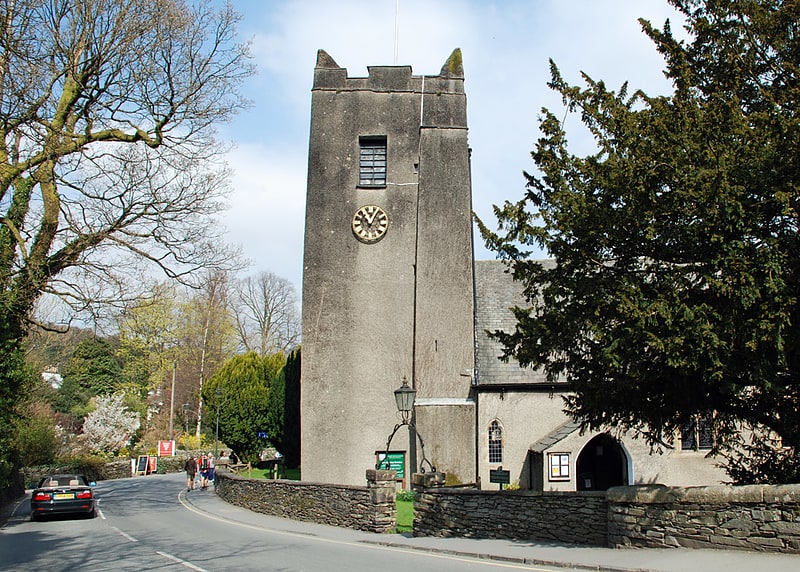
Anglican church in Grasmere, England. St Oswald's Church is in the village of Grasmere, in the Lake District, Cumbria, England. It is an active Anglican parish church in the deanery of Windermere, the archdeaconry of Westmorland and Furness, and the diocese of Carlisle. The church is recorded in the National Heritage List for England as a designated Grade I listed building. As well as its architectural interest, the church is notable for its associations with the poet, William Wordsworth and his family, and for its annual ceremony of rushbearing.[3]
Address: Grasmere Cres, LA9 6LP Kendal
Grisedale Tarn
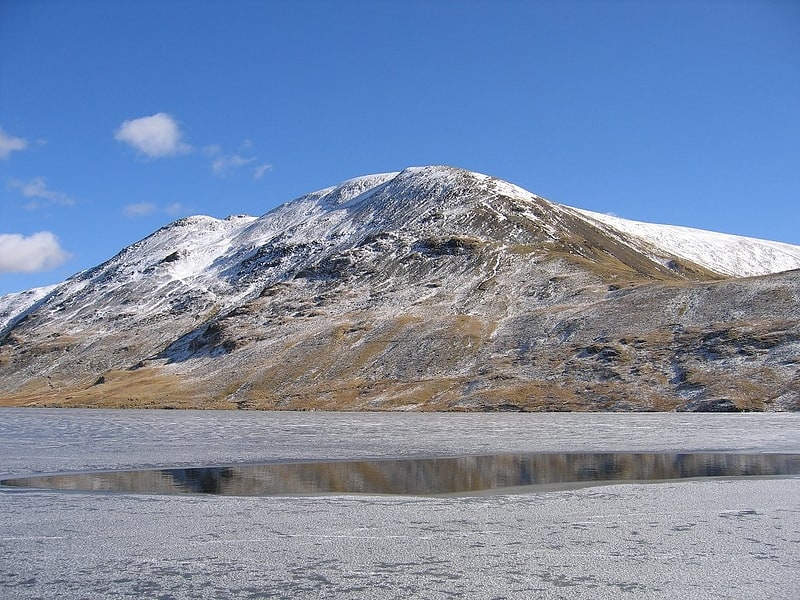
Tarn in England. Grisedale Tarn is a tarn in the Lake District of England between Fairfield and Dollywagon Pike.
It is the legendary resting place of the crown of the kingdom of Cumbria, after the crown was conveyed there in 945 by soldiers of the last king, Dunmail, after he was slain in battle with the combined forces of the English and Scottish kings.
Grisedale Tarn is 538 metres (1,765 ft) in altitude and has a maximum depth of around 33 metres (108 ft). It holds brown trout, perch and eels. The outflow is to Ullswater to the north-east, picking up all of the rainfall from the eastern face of Dollywagon Pike.
The Tarn is the subject of a poem by the Rev. Frederick William Faber printed in 1840.[4]
Alcock Tarn
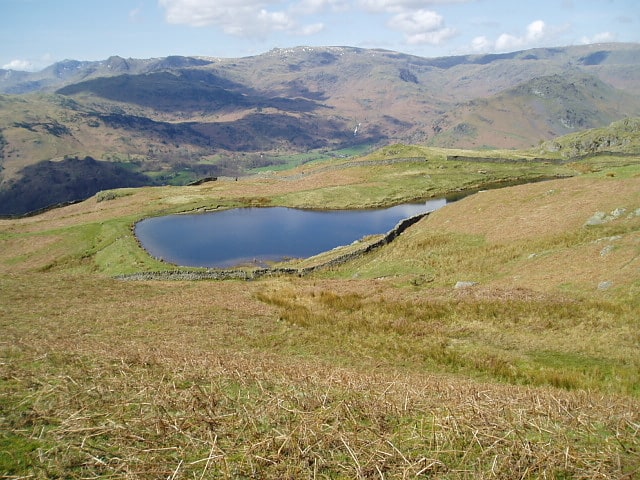
Lake in England. Alcock Tarn is a lake in Cumbria, England. It is located high in the fells on Heron Pike, roughly a mile and a half east of Grasmere.[5]
Easedale Tarn
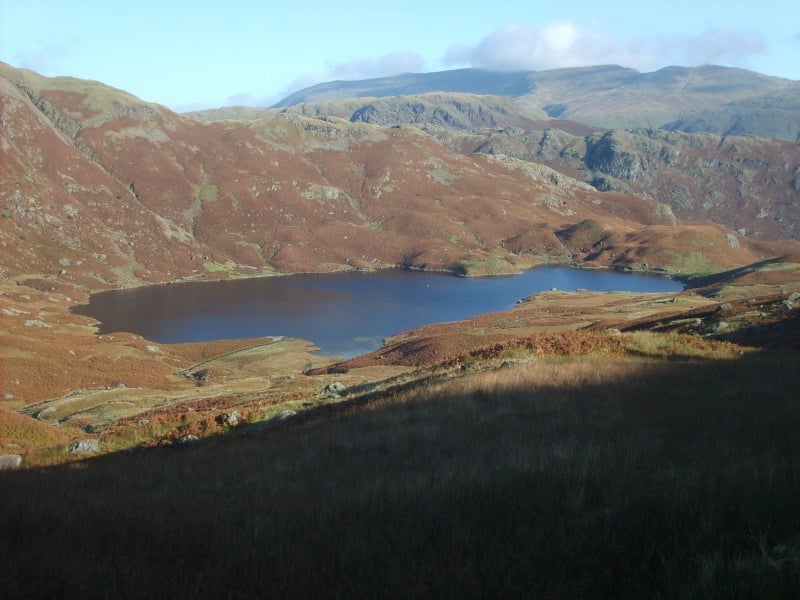
Tarn in England. Easedale Tarn is a tarn in the centre of the English Lake District, about two miles west of the village of Grasmere. It lies in a hollow between Tarn Crag to the north and Blea Rigg to the south, about 910 feet or 280 metres above sea level. The hollow was formed by a small corrie glacier, and is believed to have filled with water around 11,000 years ago when the ice finished melting.
Easedale Tarn is one of the larger tarns in the district, about 480 metres (1,570 ft) long and 300 metres (980 ft) wide. Its outflow is Sourmilk Gill, named after the milky white colour of its waterfalls, which runs east towards Grasmere. The gill displays impressive water scenery when seen from Grasmere, and from the path to the tarn.
The tarn is a popular destination for walkers. Many people climb the path from Grasmere which overlooks Sourmilk Gill. The ascent was popular during the Victorian period, and a refreshment hut was even established in the 19th century by Robert Hayton of Grasmere above the outlet of the tarn to service the thirsty visitors. The hut is long gone, and nettles now grow where the ruins used to be.[6]
Helm Crag
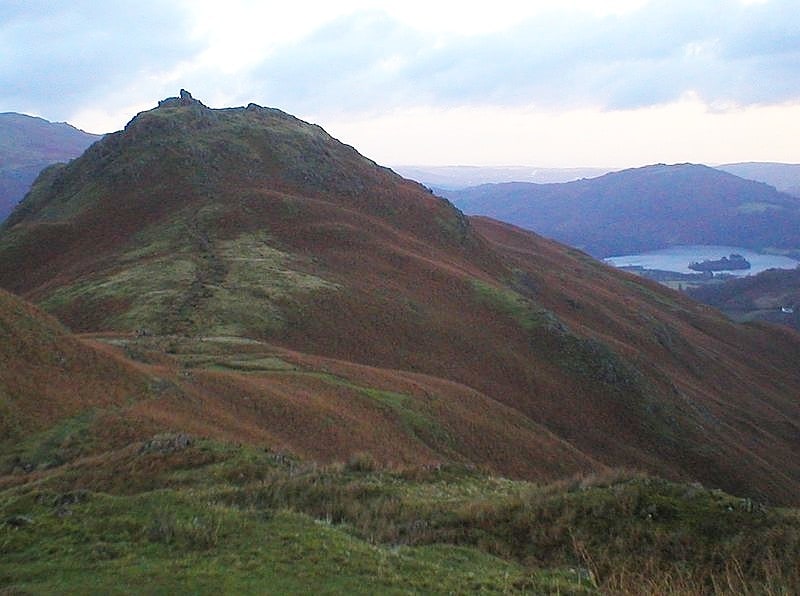
Fell in England. Helm Crag is a fell in the English Lake District situated in the Central Fells to the north of Grasmere. Despite its low height it sits prominently at the end of a ridge, easily seen from the village. This, combined with the distinctive summit rocks which provide the alternative name 'The Lion and the Lamb', makes it one of the most recognised hills in the District.
Alfred Wainwright wrote of Helm Crag that "The virtues of Helm Crag have not been lauded enough. It gives an exhilarating little climb, a brief essay in real mountaineering, and, in a region where all is beautiful, it makes a notable contribution to the natural charms and attractions of Grasmere."[7]
Crinkle Crags
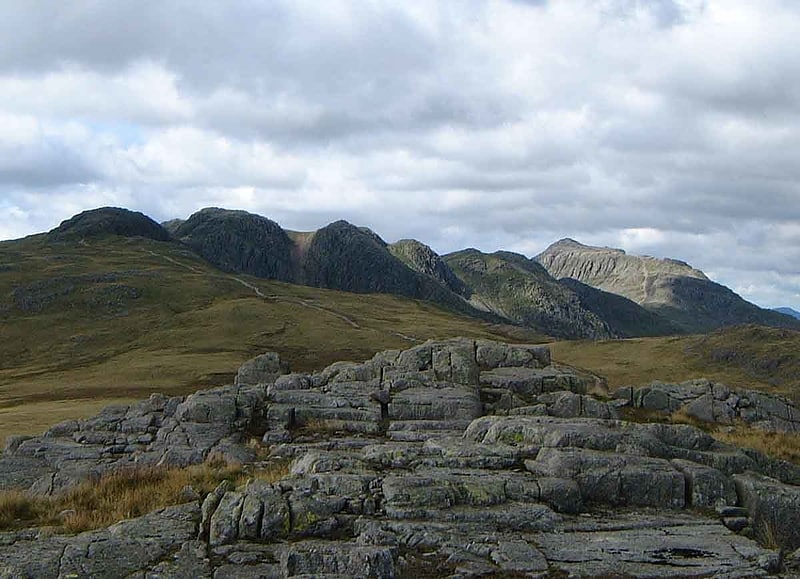
Fell in England. Crinkle Crags is a fell in the English Lake District in the county of Cumbria. It forms part of two major rings of mountains, surrounding the valleys of Great Langdale and Upper Eskdale. The name reflects the fell's physical appearance as its summit ridge is a series of five rises and depressions that are very distinctive from the valley floor. In Old English, cringol means twisted or wrinkled.[8]
Fairfield

Fell in England. Fairfield is a fell in the English Lake District. It is the highest of a group of hills in the Eastern Fells, standing to the south of the Helvellyn range.[9]
Nab Scar
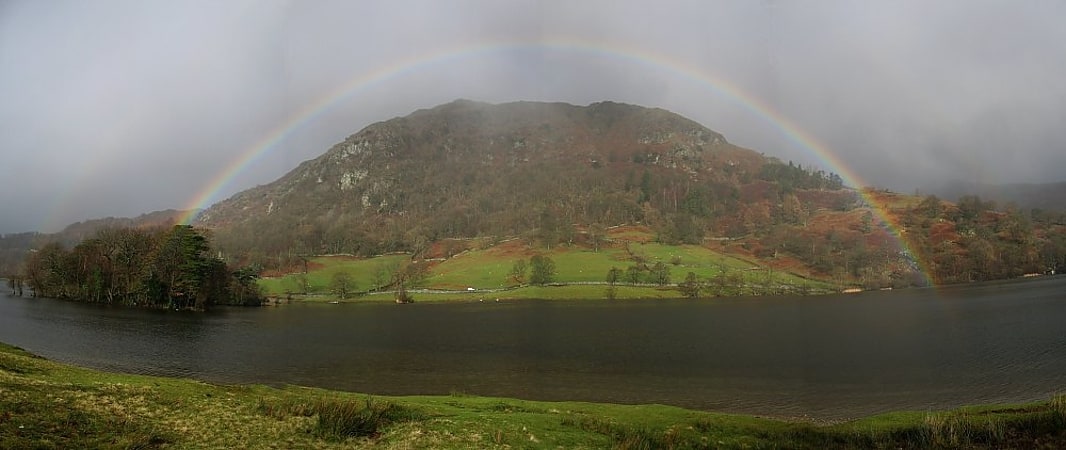
Fell in England. Nab Scar is a fell in the English Lake District, an outlier of the Fairfield group in the Eastern Fells. It stands above Rydal Water.[10]
Dove Crag
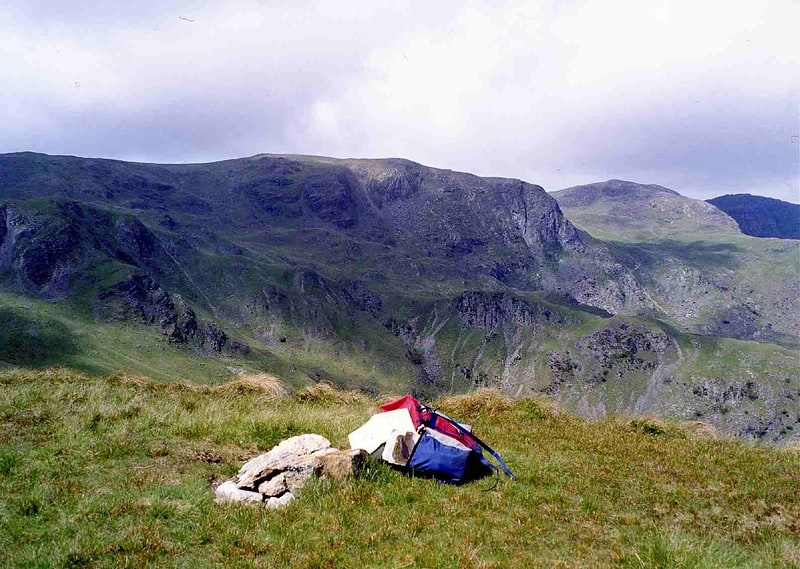
Fell in England. Dove Crag is a fell in the English Lake District. Situated in the Eastern Fells of the national park, seven kilometres south-south-west of Glenridding, it reaches a height of 792 metres. The fell is often climbed as part of the Fairfield horseshoe walk but a direct ascent from Patterdale is required to show the fell's full potential, displaying the impressive crags just to the north east of the summit. The highest point was originally unnamed on maps, being just a minor top, but over the years the summit has adopted the name of Dove Crag by mutual accord..[11]
High Pike
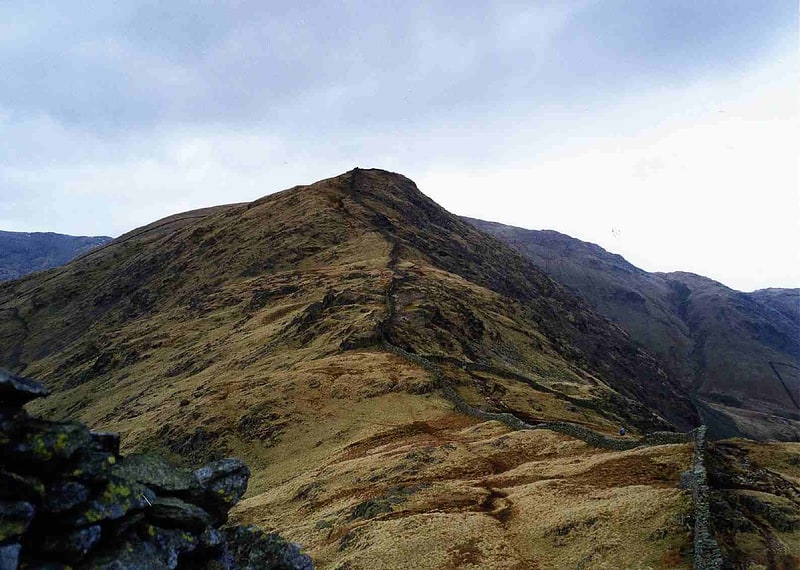
High Pike is a fell in the English Lake District, located five kilometres north of Ambleside. Situated in the Eastern Fells, it can be confused with another Lake District High Pike in the Northern Fells. High Pike reaches a height of 656 metres. It is sometimes referred to as Scandale Fell, although this name really only applies to the high ground at the head of Scandale.[12]
Hart Crag
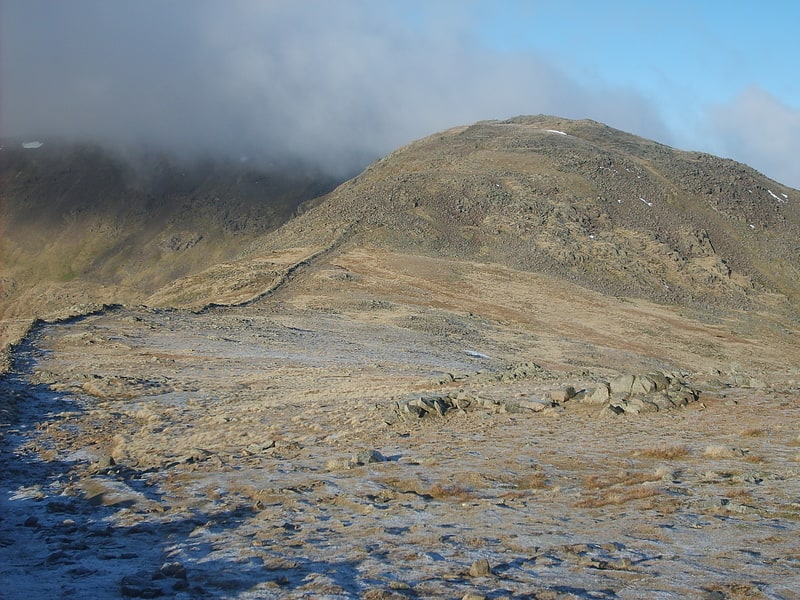
Fell in England. Hart Crag is a fell in the English Lake District, being one of the Fairfield group of hills in the Eastern Fells.[13]
Seat Sandal
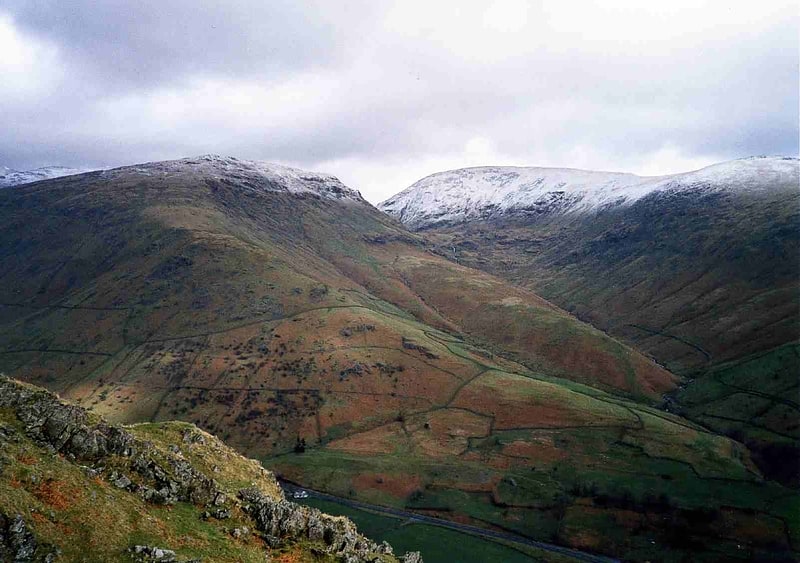
Fell in England. Seat Sandal is a fell in the English Lake District, situated four kilometres north of the village of Grasmere from where it is very well seen. Nevertheless, it tends to be overshadowed by its more illustrious neighbours in the Eastern Fells, Helvellyn and Fairfield.[14]
Allan Bank
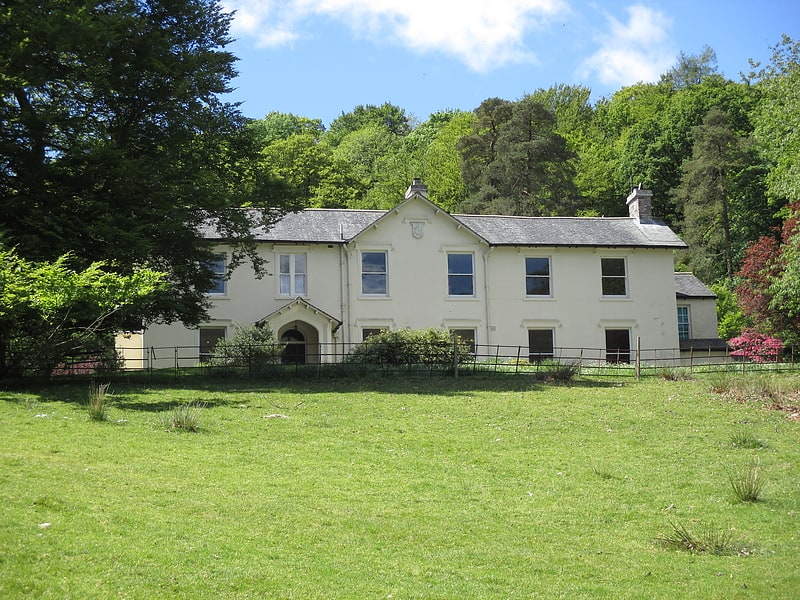
Country house in England. Allan Bank is a grade II listed two-storey villa standing on high ground slightly to the west of Grasmere village in the heart of the Lake District. It is best known for being from 1808 to 1811 the home of William Wordsworth, but it was also occupied at various times by Dorothy Wordsworth, Dora Wordsworth, Thomas De Quincey, Samuel Taylor Coleridge, Thomas Arnold, Matthew Arnold and Canon Hardwicke Rawnsley. It is now owned by the National Trust and is open to the public.[15]
Heron Pike
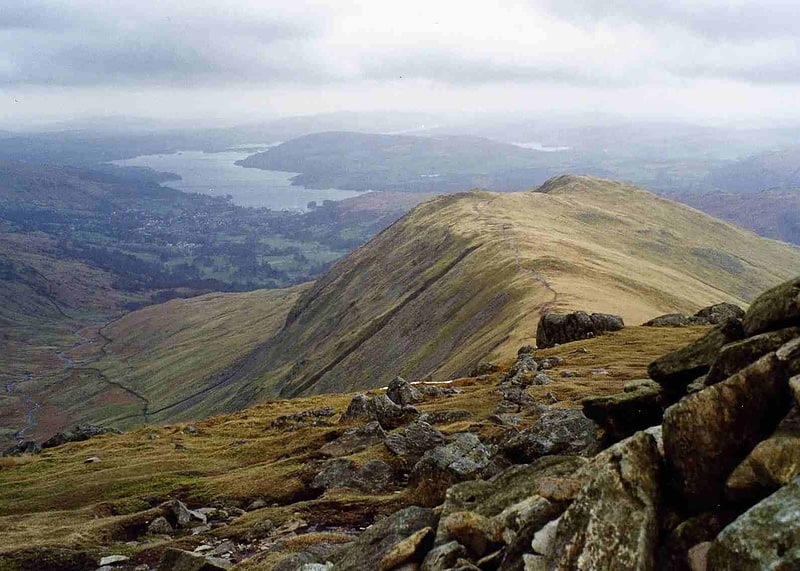
Heron Pike is a fell in the English Lake District, two kilometres east of Grasmere. It is part of the Fairfield group in the Eastern Fells. It should not be confused with the Heron Pike that forms part of Sheffield Pike, although it appears that, by coincidence, both Heron Pikes are exactly the same height.[16]
Great Rigg
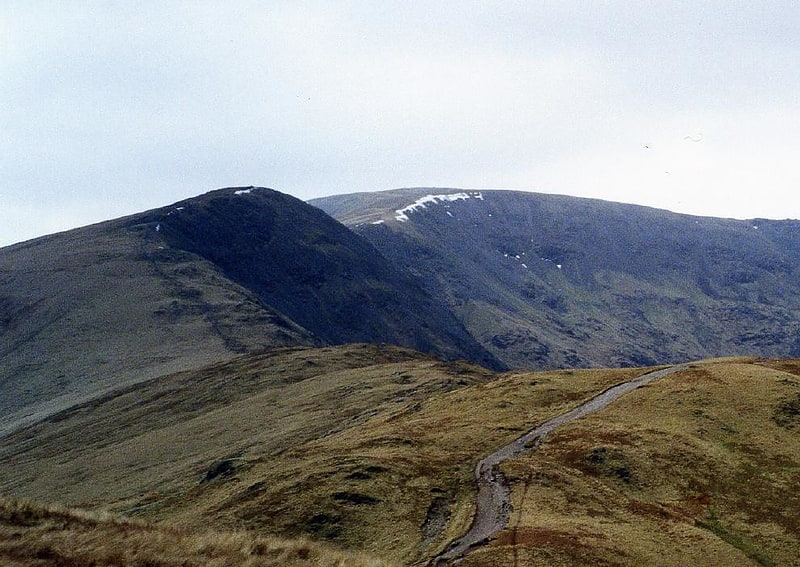
Fell in England. Great Rigg is a fell in the English Lake District, 7 kilometres north-west of Ambleside and reaching a height of 766 metres. It is most often climbed as part of the Fairfield horseshoe, a 16-km circular walk which starts and finishes in Ambleside. The fell's name originates from the Old English "Rigg", meaning a bumpy or knobbly ridge.[17]
Holy Trinity Church
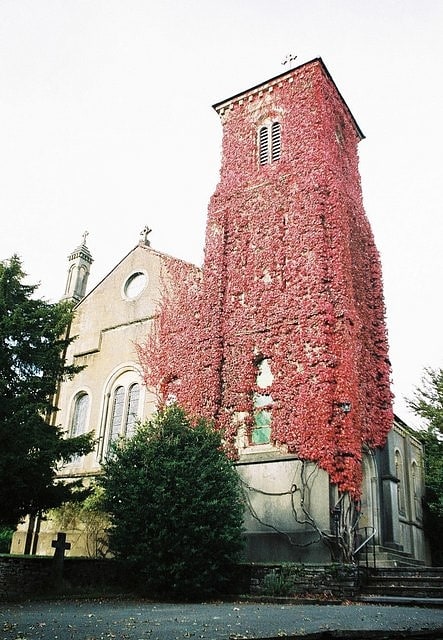
Church in Clappersgate, England. Holy Trinity Church is in Bog Lane in the village of Brathay, Cumbria, England. It is an active Anglican parish church in the deanery of Windermere, the archdeaconry of Westmorland and Furness, and the diocese of Carlisle. The church is recorded in the National Heritage List for England as a designated Grade II listed building. The hilltop site for the church was recommended by William Wordsworth who, when describing it in a letter in 1836, said "there is no situation out of the Alps, nor among them, more beautiful than that where this building is placed".[18]
Calf Crag
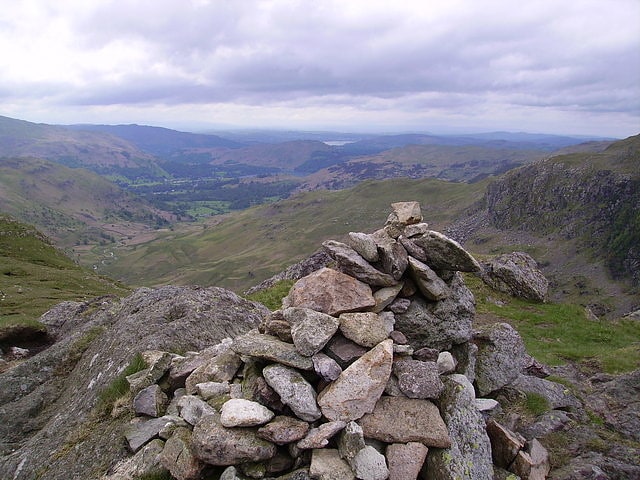
Fell in England. Calf Crag is a fell in the English Lake District, on the eastern side of the High Raise massif.[19]
Tarn Crag
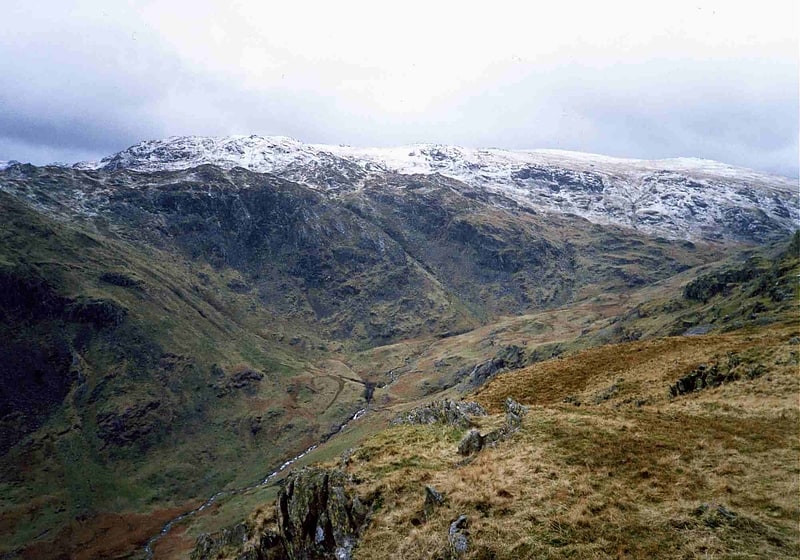
Fell in England. Tarn Crag is a fell in the Central Fells of the English Lake District. Strictly the name refers only to the rock face looking down upon Easedale Tarn, but Alfred Wainwright applied it to the entire ridge lying between the Easedale and Far Easedale valleys in his Pictorial Guide to the Lakeland Fells[20]